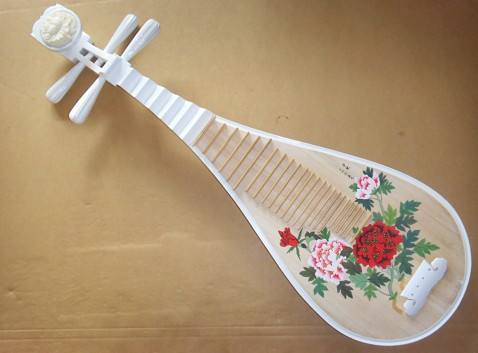Pipa narrative epic -- the origin, connotation analysis and artistic charm of the famous song Sai Shang Qu
The solo Pipa piece "Sai Shang Qu" is a very representative piece in the treasure house of Chinese traditional music. With its magnificent artistic conception and deep and passionate emotions, it vividly shows the scenery of the frontier fortress and the life of the garrison soldiers. This piece of music originates from the ancient military culture and frontier life experience, and perfectly combines the national historical memory with the musical art through the rich expressiveness and unique playing skills of the pipa.

The creative inspiration of "Jam Song" mostly comes from the heroic spirit and tragic feelings of the frontier jam poems of the Tang Dynasty, and the melody is ups and downs, both the vast description of the desert smoke, the river sunset, and the true representation of the war scene of the flames and the smoke of the war horse. The melody is bleak and fierce, sometimes showing the desolation and silence of the border, sometimes turning into a fierce battle scene, fully embodying the tenacious spirit and heroic ambition of the Chinese nation in the process of resisting foreign aggression and defending the country.
In terms of musical structure, Sai Shangqu is usually divided into several thematic paragraphs with distinct contrasts, including the quiet part depicting the scenery of the frontier jams, and the part showing the tension of the battle and the triumphant song. Among them, all kinds of pipa playing techniques such as rotating fingers, sweeping strings, picking and so on are skillfully used, so that the notes seem to turn into a vivid picture of the outside of the wall on the paper.
After the inheritance and development of different ages, artists of different schools have adapted and innovated it to different degrees according to their own understanding, thus making the artistic style of "Sai Shang Qu" more rich and diverse. It has not only become a touchstone of pipa playing skills, but also a musical interpretation of Chinese traditional culture and national spirit.
In short, as one of the famous songs of the pipa, the profound connotation and aesthetic value of the music language make it go beyond the simple scope of artistic appreciation, and become an important cultural symbol connecting history and modern times and showing the tenacious character of the Chinese people. Through the in-depth interpretation and appreciation of "Sai Shang Qu", we can more intuitively feel the infinite charm of Chinese traditional music and its historical and cultural heritage.
 渝公网安备 50010702504639号
渝公网安备 50010702504639号